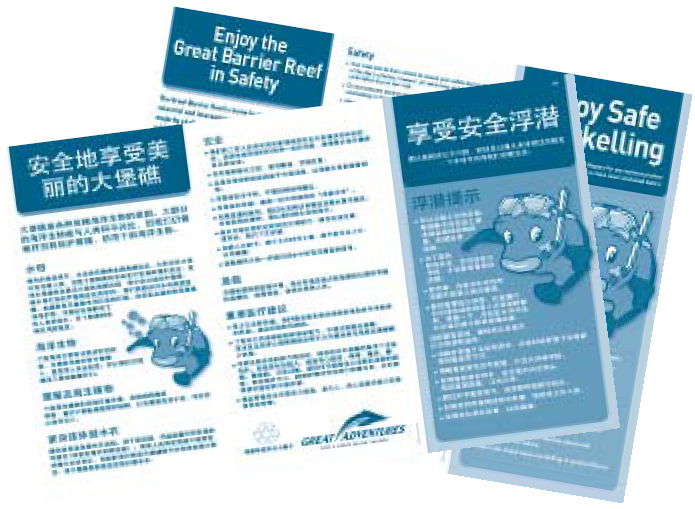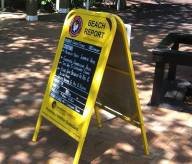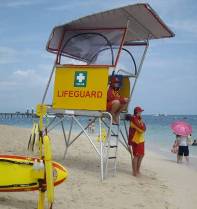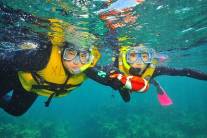Great Adventures case study - Safe use of hire snorkelling equipment
This case study can be used as a reference for other recreational diving and snorkelling operators to improve their customer safety.
Organisation
Great Adventures, part of the Quicksilver Group, is a Cairns based reef tour operator with two outer reef pontoons, a 46 room island resort (Green Island) and an 80 passenger capacity day dive boat, Silverswift.
Great Adventures is one of the largest recreational dive and snorkelling companies in Australia, taking approximately 200 000 passengers, about 18 000 of whom are divers, to reef sites each year. Great Adventures employs 39 staff specifically to provide diving and snorkelling services.
Green Island is a Great Barrier Reef destination with several tour operators ferrying passengers to the island. The island is particularly popular with visitors from Asia and other emerging tourism markets who travel to Cairns. In addition to the resort, there are a number of other businesses that provide services to island visitors.
The island is surrounded by beaches leading to shallow reef snorkelling and diving sites. On one section of the beach a professional lifeguard is employed.
As well as offering a guided vessel based snorkelling tour experience, Great Adventures also provides snorkelling equipment for hire from a dive shop on the island. This initiative has enhanced the services to island visitors who wish to snorkel, while improving safety.
Initiatives to improve health and safety of snorkellers
Building on existing high standards of customer care, Great Adventures identified that there was room to improve the safety of snorkelers and further minimise the risk at Green Island.
The key initiatives involved staff training and creating a range of information products in the main languages spoken by visitors to the island.
Information products
The information products include:
- a safe snorkelling guide, translated into five languages

- a video on how to snorkel safely which is shown on the transfer journey to Green Island and on a loop at the dive shop. All Great Adventures customers who wish to hire snorkelling equipment must visit the dive shop
- signage on the main jetty and entrance to the island.

Key messages
Using these products, key messages are communicated multiple times. These include:
- maps of the island showing the lifeguard patrolled swimming and snorkelling area

- advice to only swim or snorkel in the patrolled area. All passengers are directed to the lifeguard area regardless of ability
- information about the vessel based guided snorkelling tours available
- a strong recommendation for all medium and high risk passengers to use snorkelling jackets
- that passengers are provided with jackets at no charge if required or their booked activities are adjusted to a glass bottom boat tour.

Staff training
Great Adventures dive staff receive training to maximise the effectiveness of the key messages. The dive team has a wide range of language skills (English, Japanese, Korean, Chinese, French, Italian, Spanish and German) and wherever possible staff rosters are arranged to ensure appropriate staff are available for foreign language groups.
The staff who supply the snorkelling equipment are trained to assess the risk of each customer and provide tailored advice, ensuring each customers can use the equipment safely.
High risk passengers, such the elderly, obese or non-swimmers are offered alternative activities or flotation devices and all passengers are directed to snorkel in the lifeguard patrolled area.
All dive staff maintain a high standard of rescue and first aid skills including oxygen resuscitation and therapy, diver first aid and defibrillator use.
Dive supervisors and senior staff also have occupational emergency care or emergency medical technician training so they can provide a higher level of support. In-house risk management training is also conducted, including how to identify and manage the safety of high risk clients.
Safety outcomes
Great Adventures have seen improvements for both their customers and their business as a result of the safety initiatives.
Some of the noted benefits include:
- greater customer acceptance of snorkelling advice and instruction
- an increase in customers snorkelling in the lifeguard patrolled area on Green Island
- more customers receiving safety advice in their native language and better use of flotation devices
- improved customer satisfaction, particularly when customers have access to information they can easily understand
- increased opportunity to promote the snorkel hire business and increased the safety for all participants
- growth in retail sales of hire equipment and tours
- increased likelihood of requests for assistance from customers, particularly if they have received positive reinforcement on how to safely undertake the snorkelling activity and have the opportunity to communicate in their own language
- improved promotion of the dive industry, particularly to the larger emerging tourism markets.
Role of senior management
Great Adventures management takes an active approach to improving safety by promoting new ideas and techniques. They actively implement ideas from their dive staff and attending dive industry safety forums.
Senior managers conduct and attend risk management seminars to emphasise the importance that the company places on the work completed front line staff and to demonstrate their commitment to improving safety.
Recently Great Adventures entered the Dive Safety Awards 2011 and won the category for large vessel operators.
Lessons learnt
Great Adventures has learnt a number of lessons and can make a number of recommendations to other snorkel hire businesses:
- provide good quality advice to snorkel customers in their own language
- encourage the use of flotation equipment
- use the equipment in a supervised environment, such as on patrolled sections of beach or on guided tours
- try to identify higher risk participants and advise them accordingly
- ensure you have rescue and first aid facilities to assist if required
- ensure your customers understand the information provided. Ideally it should be in a language the customer can easily understand and is provided on more than one occasion before the activity takes place
- actively identify risks and then minimise the risk effectively
- assess risk management strategies by conducting regular tests. For example, hold rescue training drills or actively consult with staff and seek their feedback.
Case study contact
Reuben Morgan – Dive Manager
Brian Cave – General Manager Operations
Ph: 07 4044 9944
Email: central_ga@quicksilvergroup.com.au
Website: www.quicksilvergroup.com.au